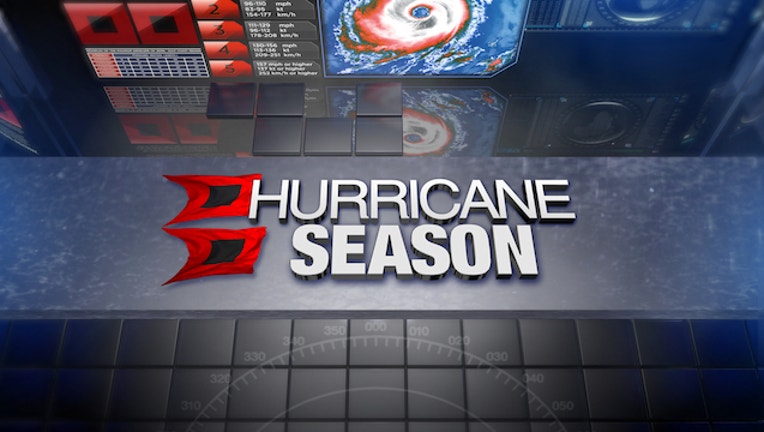Hurricane season glossary

Houston (FOX 26) - BAROMETRIC PRESSURE - A measure of how hard the atmosphere is pushing. Air will be pushed from an area of higher pressure to lower pressure. On large scales (like tropical cyclones) the rotation of the earth helps to provide a counter-clockwise spin to air moving around a low. In the northern hemisphere, all tropical cyclones will spin counterclockwise.
EL NINO / LA NINA - An area of unusually warm (El Nino) or cool (La Nina) water in the Eastern Pacific Ocean near Peru. During an El Nino, we typically see fewer hurricanes in the Atlantic and Gulf. During La Nina, there are typically more hurricanes in the Atlantic and Gulf. BUT, it is very important to remember that a lower number of storms does not necessarily lower the risk during hurricane season.
EYE / EYE WALL - The eye is the circular, relatively calm center of a well-developed hurricane. It is surrounded by the eye wall which is a band of storm clouds where the strongest winds are usually found.
FEEDER BAND / OUTER BAND - A line of rain and thunderstorms which can extend outward several hundred miles from the storm's center. These bands can cause squally weather including heavy rain, gusty winds and possibly tornadoes.
HURRICANE - A tropical cyclone with sustained surface winds of 74 miles per hour or more. Threats from hurricanes are high wind damage, storm surge, heavy rain and tornadoes. Hurricane intensity is rated on the Saffir-Simpson damage potential scale. In the western North Pacific, hurricanes are called typhoons, similar storms in the Indian Ocean and South Pacific are called cyclones.
HURRICANE HUNTERS / RECONNAISSANCE - The US Air Force Reserve together with the National Hurricane Center fly a plane (usually a C-130) into tropical systems and suspect areas. Measurements are taken at flight level and readings are taken by dropping an instrument package down into the storm. In this way we have accurate measures of wind speed, the location of the storm's center, etc.
HURRICANE / TROPICAL STORM WARNING - An advisory issued by the National Hurricane Center for a specific area of the coastline. A Hurricane/Tropical Storm Warning means that those conditions are expected within 36 hours or less.
HURRICANE / TROPICAL STORM WATCH - An advisory issued by the National Hurricane Center for a specific area of the coastline. A Hurricane/Tropical Storm Watch means that those conditions are possible within 48 hours.
MILLIBAR (mb) - A measure of atmospheric pressure. Average atmospheric pressure at sea level is 1013 millibars. A hurricane will generally have a pressure of 990mb or less. The most intense Atlantic hurricane on record was Gilbert with a pressure of 888mb. Except for tropical weather, pressure is most often stated in inches of mercury such as 30.00". (1 inch of mercury = 33.86 mb)
NATIONAL HURRICANE CENTER - A branch of the National Weather Service located in Miami, Fla. They are charged with monitoring and making forecasts for tropical cyclones in the Atlantic and Eastern Pacific. All hurricane and tropical storm watches and warnings will be issued by the NHC.
NATIONAL WEATHER SERVICE - A branch of the US government which monitors and forecasts weather for the country. Our area is served by the Houston-Galveston office located in League City. They issue local warnings and watches for things like severe thunderstorms, tornadoes and flooding.
TROPICAL CYCLONE - This term covers hurricanes, tropical storms and tropical depressions. Tropical cyclones form and strengthen over warm tropical waters during hurricane season, June 1st to November 30th.
TROPICAL DEPRESSION - A tropical low pressure area with a defined surface circulation and winds below 38 mph. Depressions can produce heavy rain and can intensify into tropical storms.
TROPICAL STORM - A tropical cyclone with sustained surface winds between 39 and 73 miles per hour. Tropical storms can produce inland and coastal flooding, light wind damage and tornadoes.
TROPICAL WAVE - An area of low pressure which generally moves along from east to west through the tropics. Waves do not have a defined, closed circulation at the surface, but can bring heavy rain and can intensify into tropical depressions.

